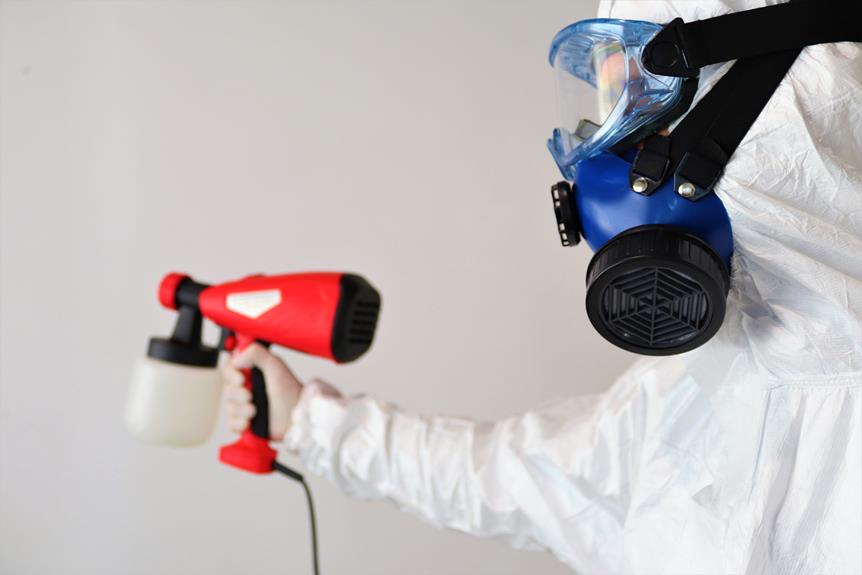Are you aware that 80% of Americans will experience back pain at some point in their lives? Understanding the importance of ergonomics in your home office setup is crucial for preventing and alleviating discomfort.
But, do you really need a letter of medical necessity to justify the purchase of ergonomic equipment? Let's delve into the requirements, alternatives, and tips for navigating this process.
Key Takeaways
- Ergonomics in home office setup is crucial for preventing and alleviating discomfort.
- Insurance coverage for ergonomic office equipment often requires a letter of medical necessity.
- Understanding reimbursement requirements is important for securing coverage.
- Crafting a professional and concise request increases likelihood of success.
Understanding Medical Necessity
To understand medical necessity, you must consider the specific health-related requirements for an ergonomic home office setup. Medical eligibility for an ergonomic home office setup depends on the individual's medical condition and how it relates to the need for ergonomic equipment. Insurance coverage for ergonomic office equipment often requires a letter of medical necessity from a healthcare provider, outlining the specific medical reasons why such accommodations are essential for the individual's health. This letter serves as a crucial document in justifying the medical need for ergonomic office equipment and can significantly impact the approval of insurance claims.
Understanding medical necessity involves recognizing the direct correlation between an individual's medical condition and the requirement for ergonomic office equipment. It's essential to gather comprehensive information about the specific health-related needs that necessitate an ergonomic home office setup. This includes understanding how certain medical conditions may be exacerbated by traditional office setups and how ergonomic equipment can alleviate these issues.
Reimbursement Requirements
You may be wondering about the reimbursement requirements for ergonomic office equipment and how they relate to the need for a letter of medical necessity.
Insurance coverage for ergonomic office equipment is contingent on meeting specific reimbursement requirements. Most insurance providers require medical justification for ergonomic office equipment to be considered a reimbursable expense. This medical justification often takes the form of a letter of medical necessity from a healthcare professional.
The letter of medical necessity should outline the medical need for the ergonomic office equipment based on the individual's health condition and how it will contribute to their overall well-being. It's essential to ensure that the equipment is deemed medically necessary before purchasing it, as insurance coverage may not be applicable without the appropriate medical justification.
Furthermore, reimbursement requirements may vary between insurance providers, so it's crucial to review your policy and consult with your healthcare provider to determine the specific requirements for obtaining reimbursement for ergonomic office equipment.
Understanding the reimbursement requirements and obtaining the necessary medical justification are integral steps in securing insurance coverage for ergonomic office equipment.
Documentation for Ergonomic Equipment
Obtaining documentation for ergonomic equipment involves meeting specific requirements and obtaining a letter of medical necessity from a healthcare professional. This documentation is crucial for justifying the need for ergonomic equipment and ensuring that you receive the necessary workplace accommodations.
Here's what you need to know about the documentation process:
- Ergonomic Assessment:
Before obtaining documentation, it's essential to undergo an ergonomic assessment conducted by a qualified professional. This assessment will identify specific ergonomic needs based on your work tasks, environment, and any existing medical conditions.
- Letter of Medical Necessity:
A letter of medical necessity from a healthcare provider is a vital component of the documentation process. This letter should clearly outline your medical condition, the recommended ergonomic equipment, and how it will address your specific needs.
- Workplace Accommodations:
Documentation for ergonomic equipment will support your request for workplace accommodations. This may include height-adjustable desks, ergonomic chairs, specialized keyboards, or other equipment necessary for maintaining your health and productivity.
Alternative Approaches to Approval
Seeking approval for ergonomic equipment can involve exploring alternative approaches beyond a traditional letter of medical necessity. When navigating the approval process, it's essential to consider alternative avenues for securing coverage and support for ergonomic home office setups. Here are some alternative approaches to gaining approval for ergonomic equipment:
| Alternative Approaches | Description |
|---|---|
| Insurance Coverage | Research your insurance policy to determine if it covers ergonomic equipment. Some insurance providers offer coverage for ergonomic office equipment, especially if it's deemed medically necessary for your well-being and productivity. Understanding your policy's coverage can save you time and effort when seeking approval. |
| Physician Support | Engage your physician to provide documentation supporting the medical necessity of ergonomic equipment. Physicians can offer valuable insight and evidence to strengthen your case for approval. Their support can significantly impact the approval process, as their expertise carries weight in justifying the need for ergonomic accommodations.
Exploring these alternative approaches can enhance your chances of obtaining approval for ergonomic equipment, ultimately contributing to a more comfortable and productive home office setup.
Tips for a Successful Request
For a successful request for ergonomic equipment, consider involving your employer in the approval process to demonstrate the benefits for both your health and productivity. When crafting your request, be sure to format it in a professional and concise manner. Include all the necessary information that supports your need for ergonomic equipment.
Here are some tips to increase the likelihood of a successful request:
- Clearly outline the specific ergonomic equipment you're requesting and how it will directly impact your health and productivity. Provide concrete examples of how the equipment will alleviate any existing discomfort or prevent potential health issues.
- Include relevant medical documentation or assessments from healthcare professionals that support your need for the ergonomic equipment. This will add credibility to your request and demonstrate that it's a legitimate health concern.
- Emphasize the long-term benefits of providing ergonomic equipment, such as reduced absenteeism due to health-related issues and increased work efficiency. Highlighting the potential cost savings and productivity gains for the company can significantly strengthen your request.
Frequently Asked Questions
What Are the Potential Health Risks of Not Having an Ergonomic Home Office Setup?"
Without proper ergonomic setup, potential consequences include long term effects like musculoskeletal issues and workplace injuries. Prevention methods involve ergonomic solutions to mitigate health implications and ensure a safe and comfortable work environment.
Can I Request Ergonomic Equipment for My Home Office Even if I Don't Have a Specific Medical Condition?"
You can request ergonomic equipment for your home office even without a specific medical condition. Ergonomic benefits lead to increased productivity and comfort, especially crucial for remote work. Prioritizing your comfort can enhance your overall work experience.
Are There Any Tax Deductions or Credits Available for Purchasing Ergonomic Equipment for a Home Office?"
You can potentially qualify for tax benefits when purchasing ergonomic equipment for your home office. It's crucial to keep records of your purchases and consider checking ergonomic product reviews to ensure you're making eligible and beneficial investments.
What Are Some Common Ergonomic Home Office Setup Mistakes to Avoid?"
To avoid common ergonomic mistakes in your home office setup, ensure proper ergonomic posture. Position your monitor at eye level, use a supportive chair, and keep your wrists straight while typing. Avoid slouching and straining your neck.
Are There Any Resources or Support Programs Available to Help Cover the Cost of Ergonomic Equipment for a Home Office?"
Financial assistance for ergonomic home office equipment varies. Research eligibility criteria for programs like disability grants or workplace accommodations. Check with your employer about potential coverage. Understanding the options can help you secure needed resources.





